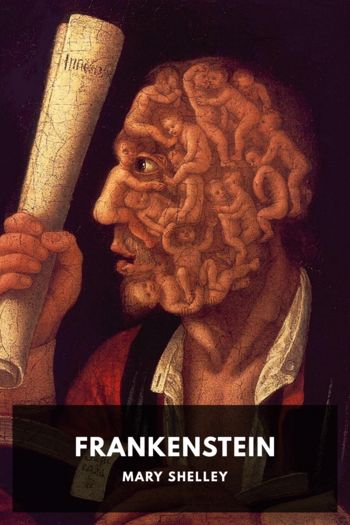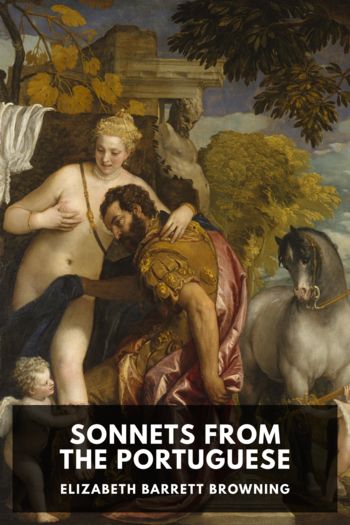Two-Way Mirror Fiona Sampson (best romance ebooks .txt) 📖

- Author: Fiona Sampson
Book online «Two-Way Mirror Fiona Sampson (best romance ebooks .txt) 📖». Author Fiona Sampson
Elizabeth’s life usually comes to us as a story ready-framed by cliché: the love story, the history of nervous invalidism, or the Victorian family melodrama. That’s especially ironic because her actual life was as a woman who revolutionised poetry, and she inspired generations of other readers and writers, particularly women. It’s also just plain wrong. Elizabeth is not a character. She has none of the plasticity of fiction. She was a real person – which means that writing about her has certain obligations and limits. Of course, rather like those other arts where faithfulness is taken for granted – translation, documentary – biography grapples with its own interpretive nature. But struggling with something is not the same as cheating.
Aurora Leigh frames this book. I’ve even borrowed its nine-book structure and the frontispiece of early editions. This isn’t to claim that the verse novel is ‘really’ an autobiography, a memoir, or even a roman-à-clef: it’s not. The course of its heroine’s life does not follow its author’s. But the work is Elizabeth’s great account of a literary development that in one absolutely central way does resemble her own: it’s the story of someone who becomes herself through becoming a poet. This is the story I believe Elizabeth would have wanted to have told about herself; the frame she deserves.
Book Two: How to be ill
I did not write, nor read, nor even think,
But sate absorbed amid the quickening glooms […]
Dissolving slowly, slowly, until lost.
Summer once again; but now it’s 1821 and Ba is fifteen. The sash window throws a double lozenge of pale West Country light onto a wall; it scarcely seems to move as hours pass. In a panel of sky, gulls wheel and tumble above the River Severn. There’s little for the eye to catch on and less to do: though the bedroom’s spacious enough and comfortable, it lacks personal clutter. ‘I am as happy as possible and have delightful fun’, Ba claims bravely in a letter to her sister Henrietta. But this is simply not true.
She’s confined to the newly built, no-frills Gloucester Spa Hotel. Just over the road stands a utilitarian, single-storey Pump Room where iodine-rich spring water is dispensed. It’s all a world away from nearby Cheltenham, the holiday town famous for its palatial neoclassical Pump Rooms, public gardens and private spas. But Ba is in Gloucester for her health, not a holiday, and the spa is medically endorsed by a local celebrity. Driven, influential and polymathic, Dr John Baron is also physician at Gloucester General Infirmary, has a large private practice, is publishing research into TB, and is advocating the vaccinations introduced by his friend, the pioneering Edward Jenner – and when Gloucester County Lunatic Asylum opens a couple of years from now, he’ll serve as a consultant there, too.
In a portrait painted just a year ago, Baron sports a cravat and silk waistcoat, turns up his velvet collar lapels and generally looks like what he is: a man unused to being crossed. But Ba, the indulged first child of a highly privileged family, and what’s more a teenager, is strong-willed too. She and Henrietta call Baron ‘Dr BARREN’ (which may be how the Scot pronounces his own name), and she grumbles that ‘he seems to have a penchant for the pillow’.
She grumbles equally about getting up:
I was out in my chair the day before yesterday but was certainly the worse for it. Yesterday the bath was tried but no sooner had the hot water touched my back than I was in agony. I could not remain in, an instant.
But a little inconsistency is par for the teenage course. Besides, by the summer of 1821 she’s been ill for some months, and her diagnosis continues to elude the doctors. This is enormously frightening at a time when almost anything, from a common cold to an infected splinter, could be fatal. Ba’s next surviving letters are dictated to her brother as if she hadn’t the strength to write herself.
One reason she’s here is that both a London doctor, Dr George Ricketts Nuttall of Dean Street, Soho, and Dr William Cother from Worcester – a second opinion the family has called in – are at a loss as to the nature of her ‘interesting case’. Cother’s diagnostic letter, based on the patient’s own account, is the most detailed version we have of the symptoms of this adolescent illness which will determine the course of her life. According to this, it starts with periodic headaches. After seven weeks, pain moves to:
the right side, that is about the center of the angle formed by the greatest projection of the ribs, the umbilicus, and the anterior superior spinous process of the os ilium. The pain commences here is carried to the corresponding region of the back, up the side to the point of the right shoulder, and down the arm […] the paroxysms [are] accompanied by convulsive twitches of the muscles, in which the diaphragm is particularly concerned.
The narrative diagnosis invites the reader to join in the detective





Comments (0)